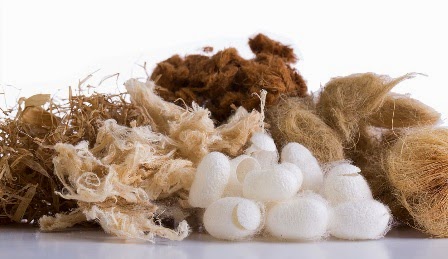
When you like fashion and have a fashion business, of course you must have knowledge about fabrics as well. Fabric is a term you will come across a lot in the fashion industry. If I asked you to tell me what fabric is, you would say, “Easy, that’s what we use to make clothes, right?”
What if we asked you to tell us what fiber is, or to tell us the difference between fabric and fiber. Can you answer it? We have to learn the very basics first.
To know more, you can read below to know the difference between fabric and fiber.
What Do Fabrics and Fibers Mean in the Fashion Industry?
Firstly, you’ve heard the saying knowledge is power, right? Yes that’s correct. If you want to be an entrepreneur in the fashion industry, you have to learn everything, and the best way to do that is to start from the roots.
Gaining knowledge of how textiles are produced, their components and their impact on product performance will give you the foundation you need to not only make wise decisions about textile materials, but also to communicate effectively with manufacturers and suppliers.
Fibers, yarns, fabric composition, and finishes are elements that contribute to the beauty, durability, care and comfort of textile products. In this article, we focus on fiber and the important role it plays in making fabrics. Understanding fibers and their performance is an important lesson for fashion designers because fiber is the basic unit of most fabrics. Having an understanding of how these factors affect the fit and flow of a garment will make it easier to choose the right fabric.
What is Fabric Fiber?
Secondly, any substance, natural or artificial, with a high length-to-width ratio and characteristics suitable for processing into fabrics is a fiber. Moreover Fibers are made up of billions of atoms bonded together in millions of long molecular chains.
In other words, fibers are long, thin strands or threads of material that can be knitted or woven into cloth. They don’t just make cloth, they affect the final product clothing aesthetics, durability, comfort, appearance, retention, care, environmental impact, and cost.
Thirdly, there are 2 types of fabric fibers that you should know! Namely natural fabric fibers and synthetic fabric fibers. Let’s get to know the most commonly used of each major fiber type.
Natural Fabric Fibers vs. Synthetic Fabric Fiber
1. Natural Fabric Fiber
Natural fabric fibers come from natural sources such as, animal, plant or mineral sources, and do not require the shaping or reforming of the fibers.
Interesting Fact: Manufactured fiber was first produced commercially in 1885. Previously, fiber was only produced by plants and animals.
Cotton
Cotton is one of the most common fibers in the world. Moreover, it grows in a form known as boll around the seeds of the cotton plant.
Wool
Wool is generally made from fleece but can also refer to other animal hair fabrics.
Hemp (Bed sheets)
Hemp is better known as Linen. This fiber material is made from the fibers present in the stems of the hemp plant.
Silk
Silk is mainly composed of fibroin which is produced by the silkworm when it builds its cocoon. However, it requires a lot of handling and processing, which makes it one of the most expensive fibers.
Natural Fiber Structure
Natural fibers have 3 different components (except silk):
The outer covering, called the cuticle or skin
Inner area
The central core, which may be hollow
2. Synthetic Fiber
This fabric fibers are different from natural fabric fibers. Synthetic or artificial (man-made) fibers are made into fibers from chemical compounds called polymers and are produced in manufacturing facilities.
polyester
Polyester is the most commonly used synthetic fiber. Synthetic polyesters are made using a chemical reaction involving coal, petroleum, air and water.
Nylon
Nylon is created when the appropriate monomers (chemical building blocks that make up polymers) are combined to form long chains through a condensation polymerization reaction.
Rayon
Rayon was the first synthetic fiber ever produced. Moreover rayon is a manufactured regenerated cellulose fiber. It is made from pure cellulose, mainly from wood pulp, which is chemically converted into soluble compounds.
Synthetic Fabric Fiber Structure
Last but nit least, Synthetic or artificial fabric fibers. Synthetic fabric fibers usually consist only of a skin and a core.
So how about mega people? Now you understand the basics of fabrics that will always be everywhere, especially in the fashion industry!
